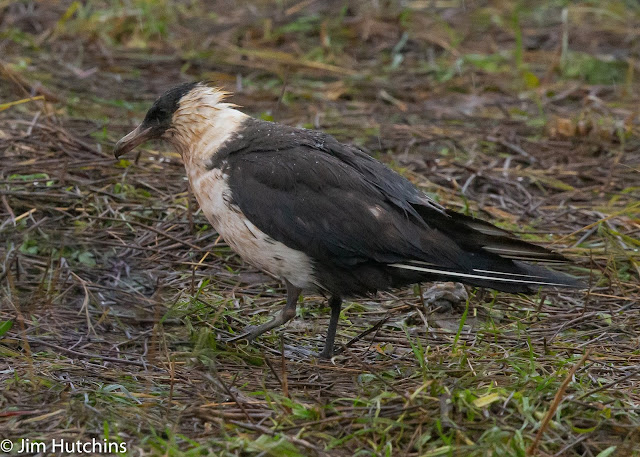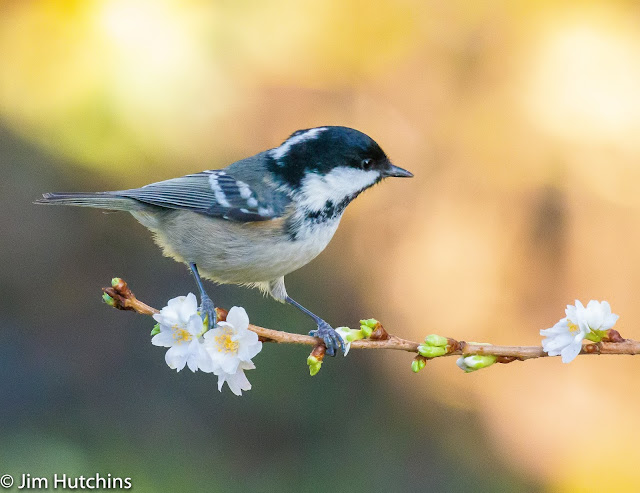On reverse migration in Pallas’s Warbler’s, encounters with Coal Tits and Poms and the missing universe
 |
| Pomarine Skua |
On Tuesday my lovely Red Setter, Dillion, had a check-up with the oncologist at Cambridge university small animal hospital. This being a follow-up to his surgery and radiotherapy for a soft tissue sarcoma a few months ago. I’m very pleased to say all looks OK apart from some thickening around the hock which is probably just scar tissue from the radiotherapy but he needs to be checked again in 2 months.
A Pallas’s leaf warbler had been found at the weekend just 2 miles from the animal hospital at Paradise Fen nature reserve so I thought it would be very rude not to drop in and see it on the way home. Pallas's leaf warbler (Phylloscopus proregulus) breeds in mountain forests from southern Siberia to north east China. It winters in southern China and south east Asia. A few, however, exhibit what is called reverse migration, i.e. they head off for their wintering grounds in the opposite direction to normal and end up in Europe. For some reason there has been an increase in the numbers found in late autumn in the UK in recent years.
The consensus in the scientific community is that most, but not all, migration is genetical programmed rather than leaned. A juvenile cuckoo, for example, will never meet its parents but it instinctively knows when and where to migrate.The vast majority of reverse migrators are first winter birds which suggests that they don’t survive to make a second winter migration and hence there is no evidence of an evolutionary advantage, i.e most of the young birds unfortunately perish in unsuitable wintering grounds. I hence suspect that it is just simply an unfortunate genetic coding error. Whatever the cause, it provides us fortunate birders with some wonderful bird watching opportunities.
On arrival at Paradise Fen I learned that the bird was around but rather elusive and only giving fleeting views. Pallas’s Warbler is a tiny bird being about the size of our smallest resident bird, the Goldcrest. Leaf Warblers, as their name suggest, also tend to prefer quite dense leafy vegetation. This particular chap was true to form and when it did show it tended to be obscured by vegetation. The light was, as has been the case so often recently, truly dire and the autofocus on my camera was really struggling to lock on. In the end I gave up on photography and just enjoyed this little jewel through my bins before heading home on the wonderful (sic!) A14.
The only day I could go out for a full day birding this week was Wednesday. Given a pretty dire weather forecast I decided to go and see a Pomarine Skua which had been at the Donna Nook grey seal colony in Lincolnshire for the past week or so. My rational being that a sea bird which spends most of its life distant from shore would be less likely to hunker down and sulk out of view during inclement weather.
The Pomarine Skua (Stercorarius pomarinus) is a large and quite aggressive sea bird being about the same size as our Herring gull. It breeds in high arctic regions in North America and throughout northern Siberia and winters off the coast of west Africa. It is normally seen in the UK as a costal passage migrant in both spring and autumn. It is hence unusual for one to stick around as the Lincolnshire bird has done. There are two colour morphs. Dark morphs are all dark brown with small white flashes on the wings. Light morphs have a pale breast and a dark cap on their heads. The Lincolnshire bird was a light morph. The American name, Pomarine Jaeger, derives from the German word jager meaning hunter which seems quite apt for an aggressive bird which is more than happy to rob other birds of their catch rather than fend for itself.
As is my custom, I left home early to avoid the local work traffic but I rather unwisely let my sat nav dictate the route and it took me via my nemesis, the city of Lincoln. It’s a little-known fact that Lincoln harbours a black hole at its centre. The event horizon is just outside of the ring road and once in it there is no escape!!! Ok that is a bit of an exaggeration but any encounter with Lincoln always seems to add an hour to your journey and today was no exception!
My good friend Nick had warned me to avoid a weekend visit as the seal pups are very popular and often attract several thousand visitors a day at the weekend. On arrival on Wednesday the heavy rain, which had not relented since I left home, seemed to have put most people off and the boggy car park only had a few other cars present. It was with some trepidation that I put my waterproofs on and walked to the beach as I really didn’t fancy spending hours trying to find the bird in the dire weather. My spirts were immediately raised, however, when I walked to the top of the dunes and immediately saw the bird flying and landing just a short distance from me. Now here is the gory bit! The bird had been attracted to the seal colony by the substantial amount of placenta generated by several thousand grey seals giving birth. Sure enough it had landed by one such tasty meal and was tucking in! With a bit of lightroom skulduggery I’ve managed to save you from the horrors of its meal to produce the sanitised images attached. It had somehow injured its leg, a warden told me it was like this on arrival, and perhaps that helped it decide to stay put at Donna Nook rather than continuing migrating with the rest of its mates. I met fellow Oxon birder Ewan while I was taking photographs and was able to personal congratulate him on some of his recent incredible twitches – see here for the full story from Ewan’s excellent blog.
 |
| Pomarine Skua |
Even with my waterproofs on the incessant rain was finding a way in to make me wet so I called it a day after lunch and headed for home. This time I at least had the common sense to put Peterborough in as a waypoint in the sat nav, hence forcing it to avoid my nemesis. Mysteriously, it gleefully then told me that this journey was some 20 miles shorter than the one it had forced on me in the morning! Oh well it’s my own fault for treating the sat nav as some kind of sentient being rather than getting the good old-fashioned map out! As a footnote to my visit, and in testament to Wednesdays atrocious weather, the car parks at Donna Nook were closed the day after my visit due to flooding.
I started my garden bird feeding program when I returned from Kenya a month or so ago. The bird feeders are again hyperactive with the dominant visitors being great and blue tits, greenfinches and goldfinches. A nuthatch was on the suet balls on Thursday, only the second record from my garden in ten years. At this time of year coal tits are also drawn into my garden to feed on the sunflower seeds. The coal tits feeding habit is very different to the great and blue tits. They are much more restless and nervous and spend the minimum amount of time possible at the feeder before flying off to eat the seed in the safety of cover. Our winter cherry trees are now in full flower and, with a certain amount of incitement, it is possible to photograph coal tits on their delicate white flowers. On Friday, at long last, the sun appeared so I spent a very pleasurable hour photographing my winter garden visitors.
 |
| Coal Tit |
 |
| Blue tit |
Well this talk of the Lincolnshire black hole has given me the urge to digress yet again and waffle on about physics for a bit. I’ve talked in the past about one of the major problems facing modern physics, namely the incompatibility of our two great twentieth century theories, quantum mechanics and general relatively. Perhaps, however, even more problematic is the case of the missing universe.
By observing the rotation and relative motion of distant galaxies it is fairly straightforward, given the equations describing gravity, to derive a particular galaxy's mass. When this derived mass is compared to what we can actually see it turns out that 93% of the mass is missing! There are two possible explanations for this, most of the mass in the universe is in a form we currently can’t observe or our theories of gravity are fundamentally wrong! Over the past twenty years or so both options have been explored. Modified theories of gravity have been developed but these still struggle to solve the problem of so much missing mass and suffer from other fairly major inconsistencies. For this missing mass to be so invisible it probably only interacts with normal matter through the exceptional weak gravitational force as opposed to the other known three forces of nature, namely the electromagnetic, strong and weak nuclear forces. The term “dark matter” has hence been coined to describe this missing mass.
Theoretical physicists have proposed a number of massive but very weakly interacting particles to describe this mass, so call WIMPS, but to date there has been no conclusive evidence that they exist. Some physicists are now proposing that the dark matter only interacts with normal matter through some as yet undiscovered fifth force of nature.
So next time you look at the stars in the dark winter night sky, remember that 93% of the universe has gone missing!

Comments
Post a Comment